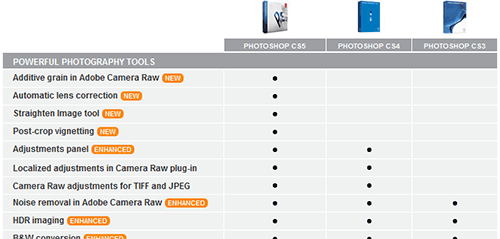
If you’re going to pay for a CS5 upgrade, odds are high that you’re going to increase your memory along with it, and 12 GB is a sweet spot for triple-channel memory kits in today’s high-end systems.

In one sense, this muddies the waters a bit since we’re effectively changing the hardware resources utilized along with the applications, but ultimately we decided this best reflected a real life decision process. Then he said for a lesser priced card go with the Gtx 480. I talked to the Nvidia quatro tech person over at Nvidia and for my situation he recommended first the quatro fx 4000 over the 3800 if I had the money to burn. When testing CS4, we still have 12 GB of system memory in the configuration, but the applications only access the first 4 GB of it. After reading a lot of information about this subject. Premiere PRO CS5 Premiere PRO CS6 This version has a quite few changes to the. Creative Cloud, built in DLLs, continue to strengthen the UI design, Mercury Playback GPU Acceleration added support of AMD graphics card. Premiere PRO 1.5 This versions have minor additions and bug fixes. Having 12 GB was important for us, because in upgrading from CS4 (or earlier) to CS5, we’re assuming that one of the main draws is to also make that leap from 32-bit to 64-bit and leverage the increased memory addressing that comes with it. Rebuiled the UI, deleted a large number of buttons and toolbars, conform to the principle of simplicity, highly praised the simple design. The lowest and highest observed utilization values were discarded unless seen to repeat at least twice. Note that when we measured CPU ranges, it was done by waiting ten seconds after launching the test and observing utilization for at least two minutes total across multiple areas within the test run. This would also hopefully help us see how much, if any, benefit there is to having Hyper-Threading in play with CS5.įiguring that most people running Creative Suite would be unlikely to purchase a Core i3, we left Turbo Boost enabled across all tests. For each of these, we tested both with and without Hyper-Threading enabled, giving us essentially six different (logical) thread count scenarios.

We chose to examine results using two, four, and six cores. To isolate the impact of scaling core counts, we picked the Gigabyte board for its ability to enable anywhere from one to six active cores in the BIOS. Primary: Intel X25-M (G2) 160 GB SSDSecondary: OCZ RevoDrive 120 GB PCIe x4ĬS4 and CS5 Custom Workload, SD project with three picture-in-picture frames, source video at 720pĬS4 and CS5 Custom Workload, 1280x720p, 59.94 FPS video, Panasonic DVCPro100, HVX-200 camcorder on P2 media, Render to Work Area.Ĭustom Workload, Encode Premiere Pro project to H.264 for Blu-ray

Intel Core i7-980X Extreme (Gulftown), Six-Core, 32 nm, 12 MB Shared 元 Cache


 0 kommentar(er)
0 kommentar(er)
